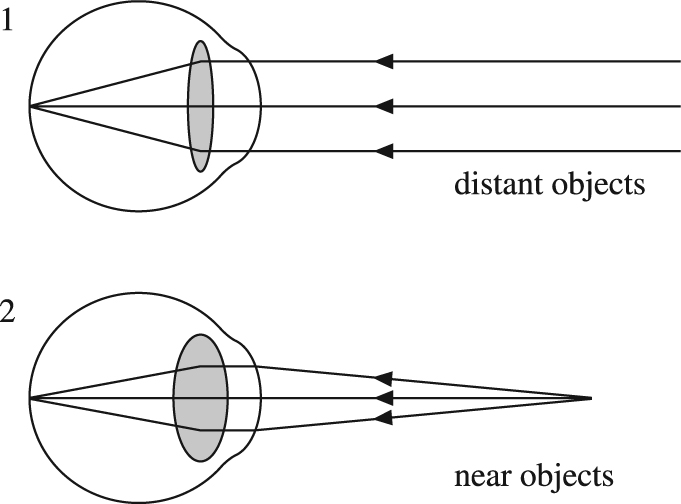The process by which the refractive power of the lens of the EYE is increased by constriction of the ciliary muscle, producing an increased thickness and curvature of the lens. Rays of light from an object further than 6 metres away are parallel on reaching the eye. These rays are brought to a focus on the retina, mainly by the cornea. If the eye is now directed at an object closer than 6 metres away, the rays of light from this near object will be diverging by the time they reach the eye. In order to focus these diverging beams of light, the refracting power of the lens must increase. In other words the lens must accommodate.
The lens loses its elasticity with age, and thus becomes less spherical when tension in the zonule relaxes. This results in an increased long-sightedness (presbyopia) requiring reading glasses for correction. (See AGEING.)

Diagram of eye in relaxed state (1), viewing a distant object; and in an accommodated state (2) with increased convexity of the lens for viewing a near object.